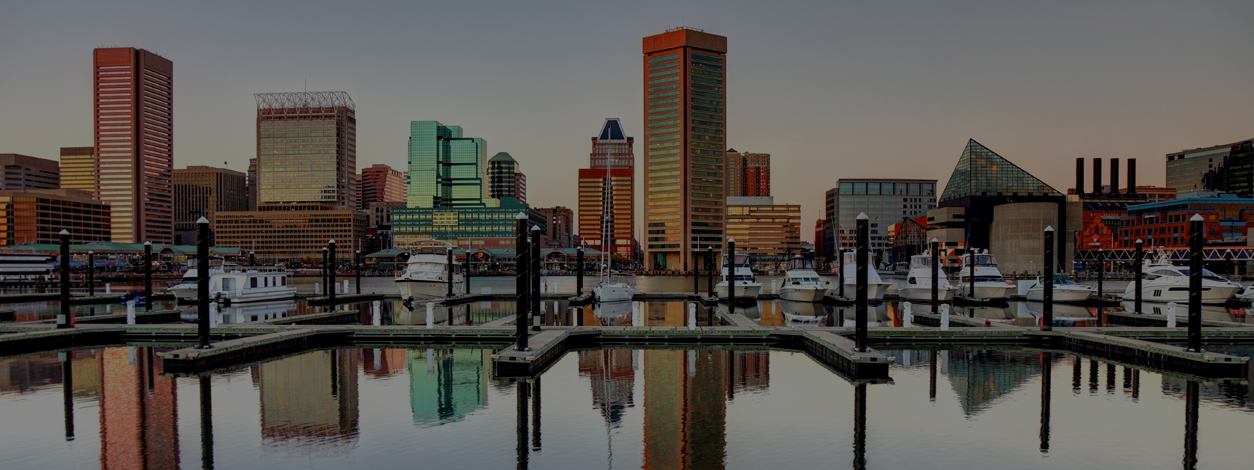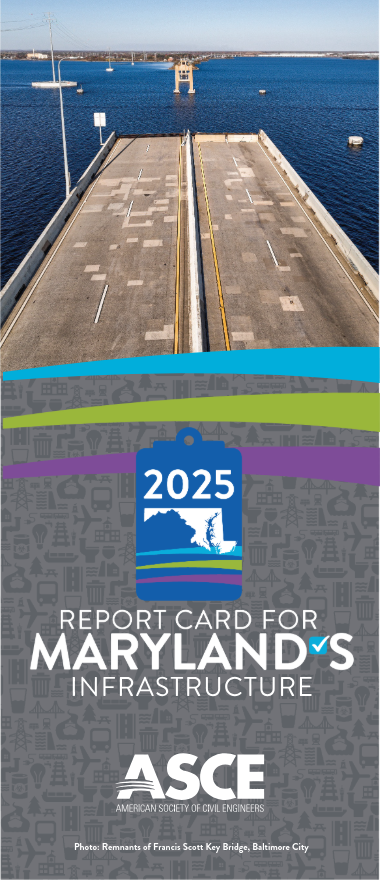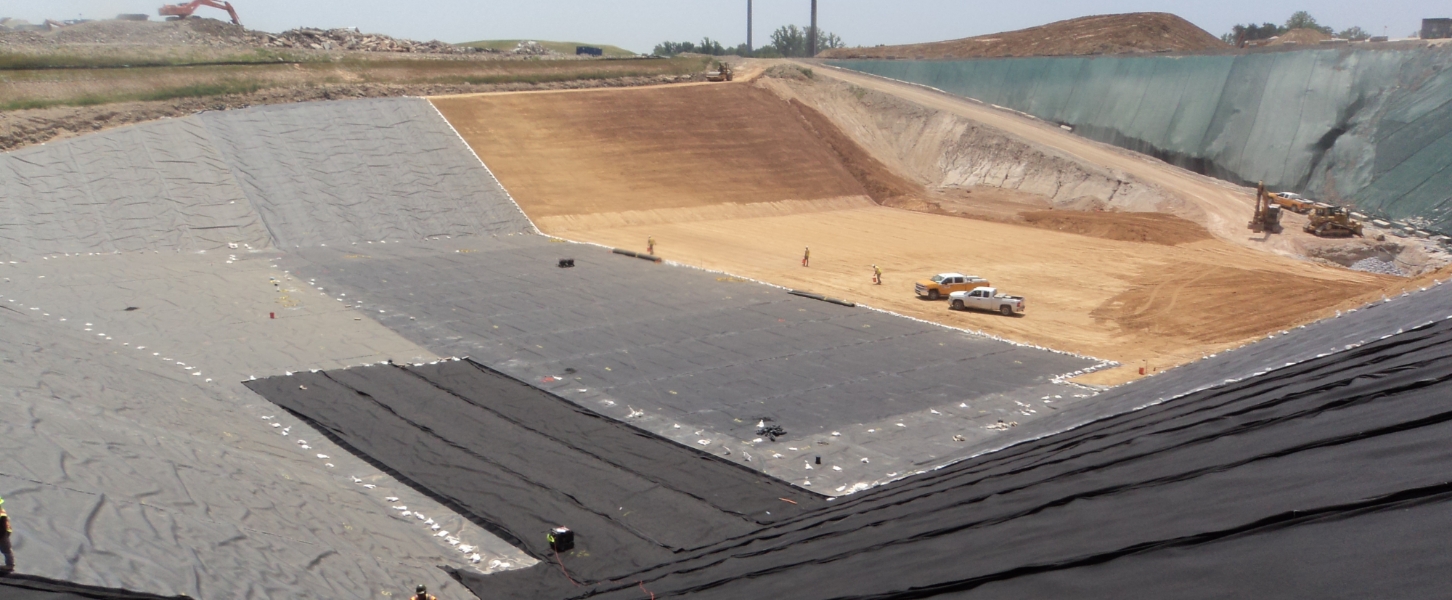2025 Maryland Infrastructure Report Card
2025 Report Card GPA: C
Maryland’s infrastructure is essential to the state’s economy, quality of life, and environmental health. It supports over six million residents, connects global commerce, and interacts with the Chesapeake Bay’s delicate ecosystem.
Maryland’s infrastructure is at a critical juncture.
This comprehensive report evaluates the condition, performance, and future needs of 13 key infrastructure categories across the state. While many systems are performing adequately, they are aging, underfunded, and increasingly vulnerable to persistent challenges which threaten long-term resilience and public safety.
The 2024 collapse of the Francis Scott Key Bridge underscores the interdependence of infrastructure systems and the urgent need for resilience and redundancy. Maryland’s bridges, 40% of which are over 50 years old, are emblematic of broader challenges. Similarly, aviation, ports, and rail systems – vital to Maryland’s role in the national and global economy – face mounting capacity and modernization needs. Baltimore-Washington International Thurgood Marshall Airport and the Port of Baltimore, both global entryways and economic powerhouses for the state, must expand and adapt to remain competitive.
Maryland’s roads and transit systems are strained by a population that has outgrown infrastructure built for a smaller, less mobile society. Roads are generally in good condition but suffer from rising congestion, safety concerns, and a growing backlog of unfunded repairs. Transit systems grapple with aging assets and limited funding. The state’s energy infrastructure, heavily reliant on out-of-state sources, must be modernized to meet growing demand and ensure reliability during the transition to renewable sources.
As a coastal state, Maryland’s water infrastructure is deeply tied to the health of the Chesapeake Bay. Drinking water, stormwater, wastewater, and dam systems are aging and increasingly vulnerable to extreme weather events. While progress has been made in water quality, that progress is fragile and requires sustained investment and innovation. Solid and hazardous waste systems are generally robust but face emerging challenges from climate risks and contaminants like per- and polyfluoroalkyl substances.
Maryland’s infrastructure is at a crossroads. The state is facing a multi-billion-dollar funding gap to keep pace with infrastructure needs. Strategic investment and innovation to support resilience, redundancy, and scale are essential to ensure these systems remain safe and capable of supporting a thriving future for the state.
The Report Card for Maryland’s Infrastructure is a tool to help residents, businesses, and policymakers understand and improve the state’s infrastructure.
The 2025 Report Card for Maryland’s Infrastructure addresses 13 categories – aviation, bridges, dams, drinking water, energy, hazardous waste, ports, rail, roads, solid waste, stormwater, transit, and wastewater.
-
Explore Maryland
- Grades
- State Fact Sheet
- IIJA Grants
Maryland Infrastructure Grades
A: Exceptional, B: Good, C: Mediocre, D: Poor, F: Failing
Each category was evaluated on the basis of capacity, condition, funding, future need, operation and maintenance, public safety, resilience, and innovation
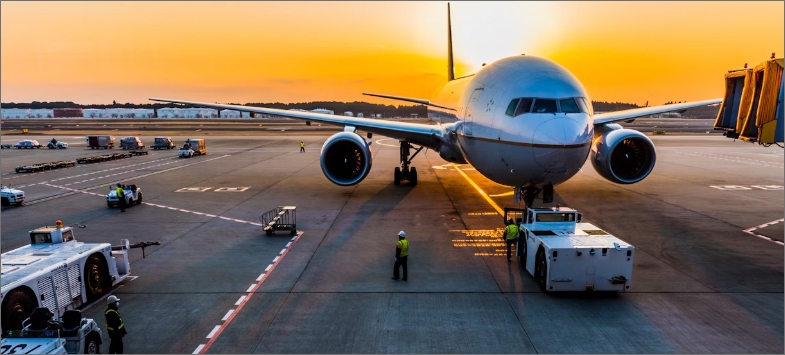

Aviation
Maryland’s aviation system plays a vital role in the state’s economy, supporting business travel, tourism, and freight movement. The state’s 33 public-use airports, including Baltimore-Washington International Thurgood Marshall (BWI Marshall), serve both commercial and general aviation needs. BWI Marshall alone accounts for 99% of Maryland’s enplanements and generates over $11 billion in annual economic impact. Continued investment in airport infrastructure is essential to maintain safety, reliability, and capacity as passenger demand grows. While runways and facilities are generally in good condition, aging infrastructure and funding constraints pose significant challenges. Statewide, an additional $8 billion will be needed over the next 20 years for safety, capacity, and modernization projects. Although federal programs such as the Airport Improvement Program and the Infrastructure Investment and Jobs Act provide crucial support, Maryland’s airports will require sustained and diversified funding sources to remain competitive, efficient, and resilient.
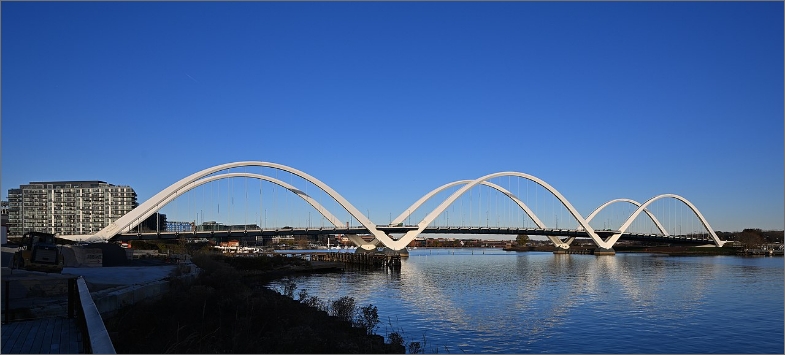

Bridges
Since 2020, the proportion of Maryland’s 5,484 bridges rated in fair condition has increased, consistent with national trends. Bridges across Maryland are aging beyond their design life, with 40% now over 50 years old and 15% over 75 years. Within five years, those figures are expected to reach 57% and 23%, respectively. Aging affects bridges of all sizes, including major crossings like the Chesapeake Bay and American Legion Bridges, whose replacements will be complex due to heavy traffic. The collapse of the Francis Scott Key Bridge in 2024 further strained Maryland’s transportation network, demanding urgent investment ahead of the planned 2028 reopening. Maryland maintains strong bridge inspection and asset management programs, using innovative methods to extend the life of fair-rated bridges and prevent deterioration. However, these efforts require steady funding, which is threatened by declining gas tax revenues and rising construction costs.
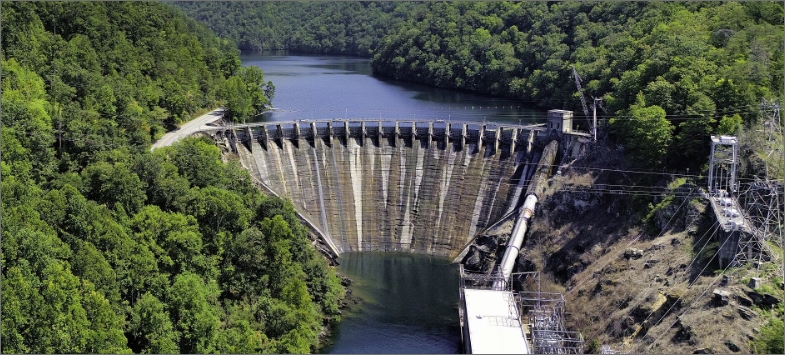

Dams
Maryland’s 555 dams provide vital services, including flood control, water supply, renewable energy, recreation, and habitat. About 44% of Maryland dams are classified as high or significant hazard potential – meaning failure could cause loss of life, property damage, and disruption to critical infrastructure. Dam safety is the responsibility of individual owners, and 45% of Maryland dams are privately owned. The Maryland Department of the Environment Dam Safety Program (MDE-DS) regulates dam design, construction, operation, and maintenance. While MDE-DS outperforms many states for inspections and emergency action plans, further needs should be addressed through enhanced funding, staffing, and regulatory updates. A key achievement from the 2025 legislative session is the creation of a Private Dam Repair Fund, offering low-interest loans for repairs or removals, funded by new dam registration and permit fees. The legislation also reinstates authority to levy financial penalties, aiding enforcement and compliance.


Drinking Water
Maryland’s drinking water infrastructure serves more than 5.5 million residents – nearly 89% of the state’s population – through more than 3,200 public water systems regulated by the Maryland Department of the Environment. While Maryland maintains one of the highest Safe Drinking Water Act compliance rates in the nation, aging infrastructure, climate risks, and growing regulatory requirements threaten long-term system reliability. Many of the state’s water mains exceed 50–75 years in age, and over 40% are past their intended service life. Small and rural systems face particular challenges in funding, staffing, and asset management. Maryland has made progress through the Water Infrastructure Financing Administration, distributing over $475 million in funding from the Infrastructure Investment and Jobs Act since 2022 for lead line removal, emerging contaminant mitigation, and system upgrades, yet the state’s drinking water needs still approach $10 billion. Sustained investment, workforce development, and climate-resilient planning are essential to ensure safe, equitable, and reliable drinking water for all Marylanders.
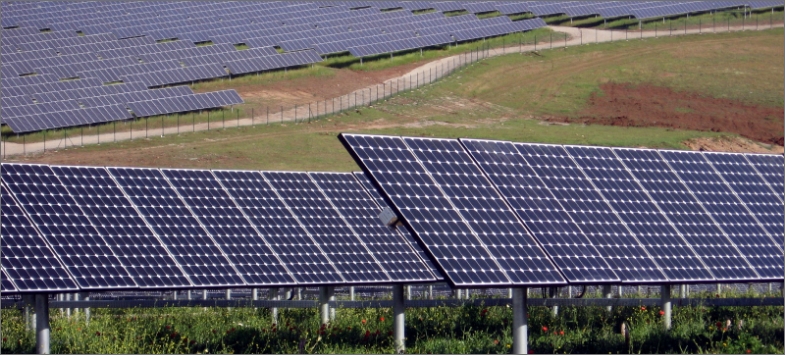

Energy
Maryland’s energy system is facing a challenging transition period as it struggles to keep pace with demand while reducing fossil fuel dependence. This effort requires careful attention to appropriately manage risks in the face of increasing dependence. Emphasis is needed on continued adequacy, reliability, and affordability of electricity supply and transportation systems, as energy is vital to the Maryland economy and the public’s health and safety. As supply sources shift and demand strains Maryland’s aging electric grid, the state faces major challenges in replacing fossil fuels – particularly for transportation and heating – while accommodating rising energy use from artificial intelligence and data centers. To manage this transition, the grid must be expanded, reinforced, and interconnected with new clean and dispatchable sources before legacy fossil fuel plants retire. Without decisive action to strengthen supply, Maryland risks reliability issues, frequent load shedding, and rising costs that could negatively impact business continuity, safety, and affordability.


Hazardous Waste
Maryland has an established hazardous waste program within the Maryland Department of the Environment’s Land Management Administration. Maryland generates roughly 0.1% of the nation’s hazardous waste and manages about 0.07%. The state’s staffing levels and funding have been sufficient to effectively administer a hazardous waste program of this scale. Maryland currently has 20 superfund sites, including nine federal facilities. The remediation process has been wholly or substantially completed at many of Maryland’s superfund sites. As with the rest of the nation, Maryland faces a major hazardous waste management challenge in addressing per- and polyfluoroalkyl substances (PFAS) as contaminants of concern. In response, Maryland developed a PFAS Action Plan to advance monitoring and testing protocols, set action levels, and implement mitigation strategies. The plan addresses drinking water, wastewater, sewage sludge, landfills, and industrial dischargers, and establishes a timeline for identifying industrial users of PFAS. Actions in the plan include cleaning up contaminated sites and investigating areas with a history of PFAS use.
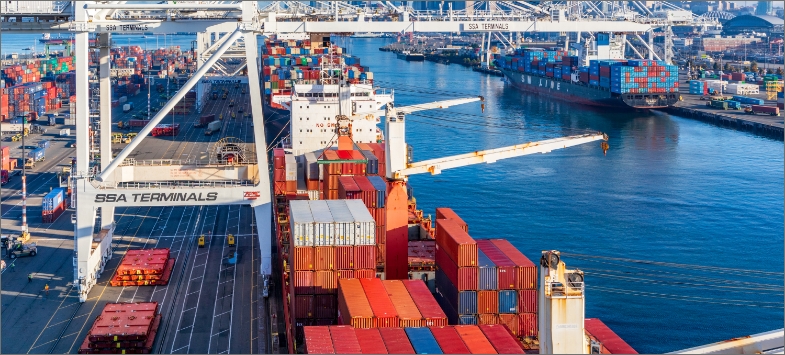

Ports
Maryland’s ports are vital to the state’s economy and transportation network, serving as gateways for national and international trade. The Port of Baltimore – the largest facility – handles nearly 50 million tons of cargo annually, including automobiles, containers, and bulk goods, and supports over 51,000 direct, induced, and indirect jobs. In total, the port system is linked to more than 273,000 jobs and generates $63 billion in economic activity, representing roughly 10% of Maryland’s workforce and 12% of its GDP. Inland waterways on Maryland’s Eastern Shore also play an important role in the state’s maritime economy, serving as regional freight corridors that complement the Port of Baltimore and strengthen Maryland’s overall competitiveness. While recent capital investments have advanced dredging, modernization, and resilience, the operating budget has not kept pace with inflation, requiring continual efficiency improvements. Investment in dredged material management, reuse, and infrastructure expansion are essential to maintain Maryland’s port competitiveness.
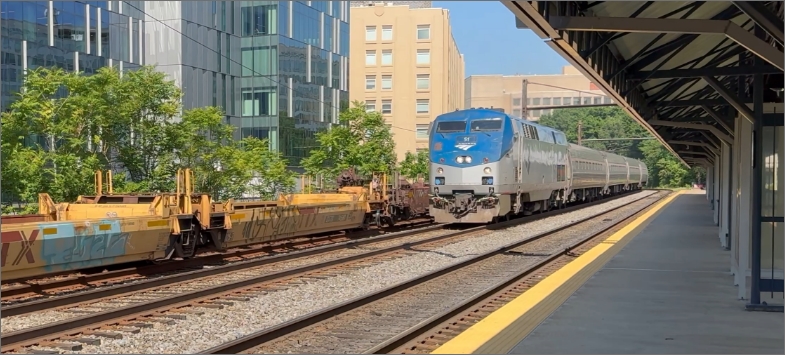

Rail
Maryland is home to one of the first railroads in the United States, the Baltimore and Ohio Railroad, which began construction in 1828. Today, the Maryland rail network consists of approximately 886 miles of active track and carries over 21 million tons of freight, with an economic impact of $372 million. Passenger rail in Maryland carries over 6.2 million passengers each year, while short line freight railroads provide first and last mile connections linking local businesses to the national rail network, supporting economic development, efficient freight movement, and regional jobs. Maryland rail infrastructure is primarily privately owned by freight operators who make significant investments in infrastructure upgrades, with annual investments of $51 million by CSX Corp. and more than $7 million by Norfolk Southern Corp. However, freight and passenger rail collectively face a more than $36 billion dollar funding gap to fully modernize infrastructure and meet growing demand.


Roads
Maryland’s 30,000-mile road network supports the state’s economy by efficiently moving people and goods. Managed by Maryland Department of Transportation’s (MDOT’s) State Highway Administration, traffic volumes remain below pre-pandemic levels, yet congestion and associated costs have increased. While the highway system is generally in good condition, deterioration is expected to accelerate despite strong maintenance efforts. Roadway fatalities have risen slightly, with bicycle and pedestrian deaths and injuries increasing more sharply, costing an estimated $32.5 billion in 2024. Highway funding comes from the Transportation Trust Fund, the state General Fund, and federal grants, but inflation and rising costs have reduced purchasing power. The backlog of unfunded state-of-good-repair projects grew from $2.2 billion in FY2023 to $3.8 billion in FY2024. Through the Transportation Resilience Improvement Plan, MDOT is identifying and mitigating threats to the network and implementing new technologies and practices to maintain performance in a budget-constrained environment.
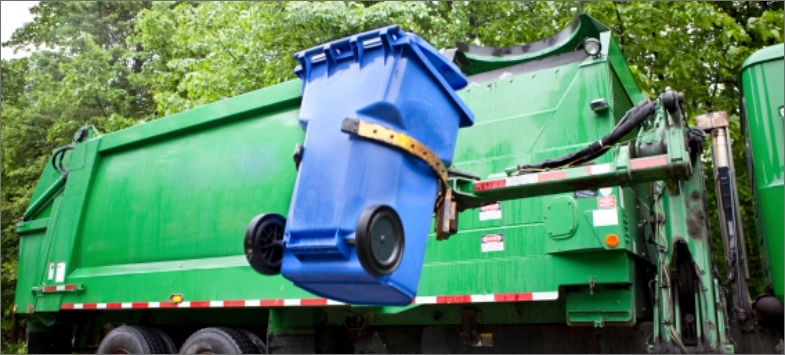

Solid Waste
Maryland’s solid waste infrastructure remains robust yet faces emerging challenges that demand strategic action. In 2023, Maryland generated over 12 million tons of solid waste, with nearly 30% exported, primarily via a single rail corridor, creating a critical vulnerability. While landfill capacity has increased significantly, aging infrastructure and climate risks, particularly in coastal areas, underscore the need for resilience planning. Maryland achieved a 40% waste diversion rate and 36% recycling rate, surpassing national averages, and advanced sustainability through food waste diversion legislation and removal of trash incineration from the Renewable Portfolio Standard. Investments in modernization, per- and polyfluoroalkyl substances mitigation, and recycling infrastructure, supported by state and federal funding, reflect strong policy momentum. Future success hinges on expanding transportation redundancy, conducting climate risk assessments, and fostering innovation in recycling markets and Zero Waste strategies. With coordinated planning and targeted investment, Maryland can strengthen its leadership in sustainable waste management.
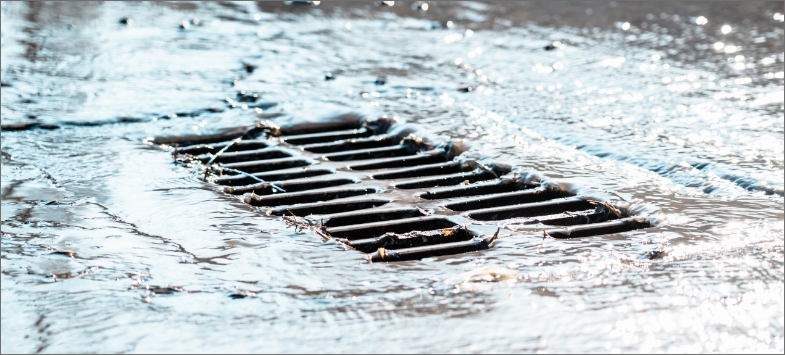

Stormwater
Maryland’s stormwater management program, administered by the Maryland Department of the Environment (MDE), is one of the most advanced in the nation. The program plays a critical role in protecting the Chesapeake Bay and local waterways from pollution, flooding, and erosion. MDE oversees municipal stormwater permits, maintains a robust database through StormwaterPrint, and has implemented innovative design standards and green infrastructure practices that serve as models for other states. However, Maryland continues to face challenges related to water quality, aging infrastructure, and the growing impacts of climate change. Statewide compliance with stormwater regulations is estimated to cost more than $7 billion, with much of the financial burden falling on local jurisdictions. While recent federal funding from the Infrastructure Investment and Jobs Act and Inflation Reduction Act has supported resiliency and flood mitigation projects, significant investment is still needed to upgrade stormwater systems and protect Maryland’s communities and natural resources for the future.


Transit
Maryland’s transit infrastructure is a cornerstone of the state’s mobility, equity, and economic vitality. The Maryland Transit Administration (MTA), Washington Metropolitan Area Transportation Authority, and 22 Locally Operated Transit Systems serve over 13 million residents across urban and suburban communities. While ridership gains, targeted investments, and strategic planning offer promise, systemic challenges from aging assets, deferred maintenance, and funding gaps undermine and slow progress. Over 20% of MTA’s assets are operating beyond their useful life, with farebox recovery rates and on-time performance below national benchmarks. Major capital projects like the Purple Line and Red Line promise improved connectivity, but long-term funding remains uncertain. Workforce shortages further strain operations. A renewed commitment to maintaining the asset portfolio in a state of good repair, modernization, and sustainability is essential to ensuring Maryland meets the needs of residents today and in the future.
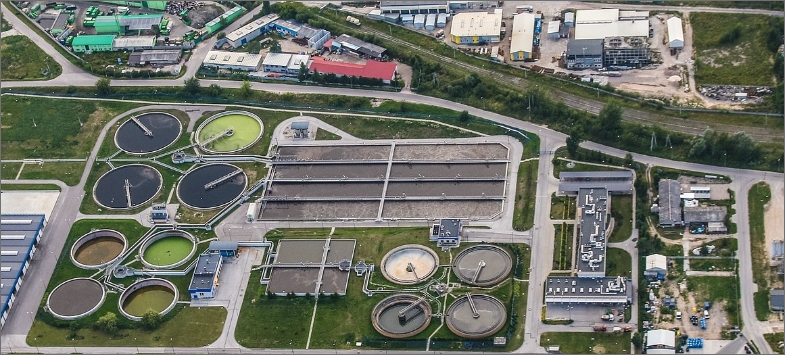

Wastewater
Maryland’s wastewater infrastructure includes a range of systems, from household septic systems to large-scale wastewater treatment plants. These systems are intended to efficiently manage daily operations while accommodating wet weather flows for individuals and communities across Maryland. Some older systems have been in place for over 150 years and have been upgraded and expanded several times. Despite improvements in water quality, Maryland still faces considerable challenges, such as minimizing sanitary sewer overflows, tackling leaks from aging urban infrastructure, and managing inadequate or failing privately owned septic systems. The ongoing management and maintenance of wastewater treatment facilities particularly challenges Maryland. In some cases, utilities in Maryland may operate within a regional system, such as the Washington Suburban Sanitary Commission, or through inter-municipal agreements, like the one between Baltimore City and its surrounding counties, which can integrate different types of utilities.
State Fact Sheet
Download Fact Sheet
Aviation
$51 million in 2024 airport improvement grants across 3 major airports

Drinking Water
$14.6 billion total drinking water need

Transit
80.8 million passenger trips across 24 systems in 2023

Bridges
5,446 bridges, 4.6% of which were structurally deficient in 2024

Hazardous Waste
26 Superfund sites

Wastewater
$6.8 billion total wastewater need

Dams
101 high hazard dams

Levees
30 miles of levees protect 15,599 residents.

Roads
49% of roads are in poor or fair condition

Connect with Your Legislators
Let everyone know how important it is that we continue to invest in the future of America’s infrastructure.
Take Action Today
